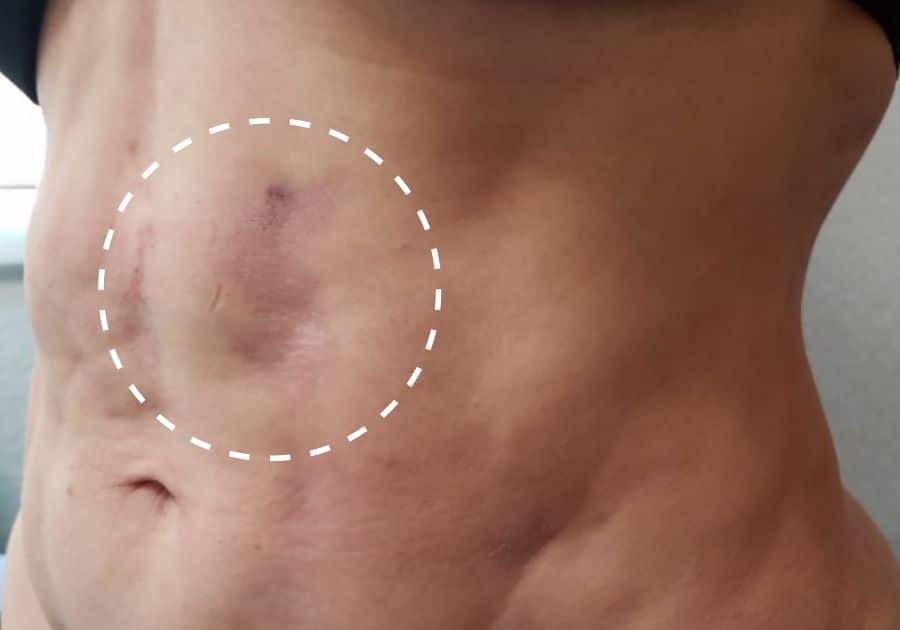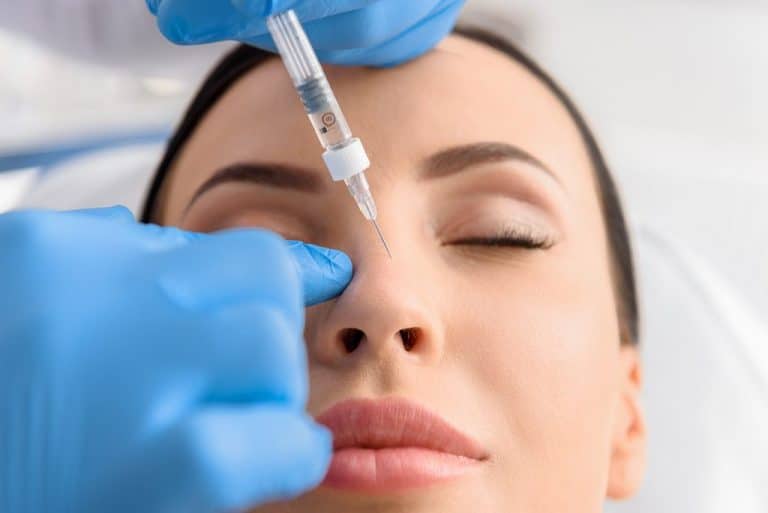Fibrosis after liposuction and fat removal is a common concern for those considering this cosmetic procedure, even with an experienced surgeon. This condition involves the formation of excess fibrous connective tissue, leading to hard lumps, uneven skin texture, and cutaneous atrophy often associated with lipo fibrosis. Understanding what fibrosis is and how it occurs can help you make informed decisions about liposuction, a surgical procedure involving fat removal and skin tightening, and its impact on scar tissue.
In this post, we’ll dive into the causes, symptoms, and preventive measures for fibrosis after liposuction, including fat, surgical treatments, lymphatic massage, and scar tissue. Whether you’re planning your first procedure or looking to manage post-surgery effects like trauma, medications, or scar tissue, this guide will provide valuable insights. Stay tuned to learn more about maintaining smooth, healthy skin after your liposuction journey, including fat reduction and CO2 laser treatments in your case.
Key Takeaways
- Understand the Risk: Fibrosis is a common complication after liposuction, even with co2 laser. Knowing the risk can help you make informed decisions.
- Recognize Symptoms: Early signs of lipo fibrosis from poor liposuction technique include hardened tissue and uneven skin texture. Prompt recognition can lead to quicker treatment.
- Seek Professional Diagnosis: Always consult with a healthcare provider for an accurate diagnosis and tailored prevention strategies, including liposuction.
- Explore Treatment Options: Treatments range from massages and physical therapy to more advanced medical procedures like liposuction, depending on severity.
- Consider Alternative Healing: Techniques like acupuncture, herbal remedies, and specialized exercises can complement traditional treatments.
- Adopt a Healthy Lifestyle: Maintaining a balanced diet, staying hydrated, and regular exercise can aid in recovery from liposuction and prevent complications like lipo fibrosis.
Understanding Fibrosis After Liposuction
Definition
Fibrosis is a condition where connective tissues thicken and scar. This can occur after liposuction. The body forms excess fibrous connective tissue in response to injury, known as lipo fibrosis, sometimes requiring liposuction.
Distinguishing from Swelling
It’s important to distinguish normal post-operative swelling from fibrosis after liposuction. Swelling is common after liposuction. It usually starts immediately after the procedure.
Swelling generally reduces over weeks or months. Fibrosis, however, can persist for much longer. Recognizing the difference helps in effective treatment.
Causes of Fibrosis
Poor liposuction technique can lead to fibrosis. Uneven fat removal may cause irregularities under the skin. Over-aggressive suctioning might also damage tissues.
Another cause could be improper post-operative care. Ignoring guidelines increases the risk of complications like fibrosis.
Symptoms of Fibrosis
Symptoms include hard lumps under the skin. These lumps are different from soft post-surgical swelling. The skin may feel tight and firm.
Pain or discomfort often accompanies these symptoms. Regular follow-ups with a doctor help in early detection of lipo fibrosis post-liposuction.
Treatment Options
Treatment varies based on severity. Mild cases might resolve with massage therapy, compression garments, or liposuction to address lipo fibrosis.
More severe cases may need medical intervention:
- Steroid injections: Reduce inflammation and soften fibrous tissue.
- Ultrasound therapy: Breaks down hardened tissue.
- Surgical revision: Corrects significant irregularities caused by fibrosis.
Preventing Fibrosis
Prevention starts with choosing a skilled surgeon. Experienced professionals minimize risks of poor outcomes.
Following post-operative care instructions is crucial:
- Wear compression garments as advised.
- Attend all follow-up appointments.
- Avoid strenuous activities until cleared by your doctor.
Causes and Symptoms
Inadequate Aftercare
Inadequate aftercare can lead to fibrosis after liposuction. Proper aftercare involves following the surgeon’s instructions closely. Neglecting these guidelines increases the risk of complications.
Several factors contribute to this issue:
- Not wearing compression garments
- Skipping follow-up appointments
- Ignoring signs of infection or inflammation
These actions, such as liposuction, may result in hard lumps beneath the skin and areas of stiffness, known as lipo fibrosis. These symptoms can cause discomfort or pain, making recovery from liposuction and lipo fibrosis difficult.
Symptoms
Fibrosis presents specific symptoms. Common signs include:
- Hard lumps under the skin
- Stiffness in the affected area
- Persistent pain or discomfort
These symptoms often appear within weeks after surgery. They may vary in severity based on individual cases.
Unusual symptoms might also occur. Severe cases can involve significant swelling and inflammation. Areas affected by fibrosis might feel tender to touch.

Compression Garments
Compression garments play a crucial role in preventing fibrosis. These garments support healing tissues and reduce excessive swelling. Wearing them consistently helps minimize potential issues.
Benefits of compression garments include:
- Reducing inflammation
- Decreasing the risk of persistent lumps
- Supporting overall healing
Patients should wear these garments as directed by their surgeon after liposuction to prevent lipo fibrosis for optimal results.
Diagnosis and Prevention
Physical Examination
Doctors start with a physical examination to check for signs of fibrosis. They look for hard or lumpy areas in the body, such as those caused by lipo fibrosis after liposuction. These areas may feel different from the surrounding tissue.
Imaging Tests
Ultrasound is a crucial diagnostic tool. It helps identify post-lipo fibrosis by showing detailed images of the affected area after liposuction. Ultrasound can detect early stages of fibrosis, making it easier to manage.
Risk Factors
Certain factors increase the risk of developing fibrosis after liposuction. A family history of fibrotic conditions, such as lipo fibrosis, can be a significant risk factor. Infections post-surgery, such as after liposuction, also increase the likelihood of fibrosis formation.
Preventative Measures
Preventing fibrosis involves several steps:
- Lymphatic drainage massage helps reduce swelling, prevents fluid buildup, and addresses lipo fibrosis.
- Proper nutrition supports healing and reduces inflammation.
- Wearing compression garments minimizes swelling, prevents lipo fibrosis, and supports the treated area.
These measures are essential for effective management of the lipo condition.
Follow-up Appointments
Attending follow-up appointments is vital. Doctors monitor recovery and catch any early signs of fibrosis. Early detection allows for immediate intervention, reducing long-term complications like lipo fibrosis.
Treatment Options
Manual Lymphatic Drainage
Manual lymphatic drainage (MLD) therapy helps treat fibrosis by enhancing lymphatic circulation. This non-invasive treatment involves gentle massage techniques. These techniques stimulate the lymphatic system to reduce swelling, improve tissue health, and address lipo fibrosis. Many patients report significant improvement in their condition, including lipo fibrosis, after regular MLD sessions.
Corticosteroid Injections
Corticosteroid injections can help reduce inflammation and fibrous tissue. Doctors often use these injections when fibrosis causes pain or restricts movement. The corticosteroids work by decreasing inflammation in the affected areas. Most patients experience relief within a few days of treatment for lipo fibrosis.
Surgical Removal
Surgical removal may be necessary for severe cases of fibrosis where non-invasive treatments are ineffective. Experienced surgeons perform these procedures to remove excess fibrous tissue. This surgical procedure is usually considered only after other options have failed.
Medications
Certain medications can also aid in treating fibrosis after liposuction. These drugs aim to reduce inflammation and prevent further fibrous tissue formation. Patients should consult their doctors for the best medication suited to their condition.
Therapy Sessions
Therapy sessions, including physical therapy, can help manage fibrosis symptoms. Physical therapists design specific exercises to improve mobility and reduce discomfort in affected areas. Regular therapy sessions often lead to better outcomes for patients.
Alternative Healing Methods
Acupuncture
Acupuncture is an alternative therapy. It involves inserting thin needles into specific points on the body. These points are believed to stimulate the body’s natural healing response. This can help reduce pain and inflammation caused by fibrosis after liposuction.
Laser Therapy
Laser therapy uses focused light to treat affected areas. It can penetrate deep into tissues, promoting healing processes. This method helps reduce scar tissue and improve skin tightening. Many patients find relief from fibrosis symptoms through laser treatment.
Herbal Supplements
Herbal supplements and vitamins can support recovery. They help reduce inflammation in the body. Turmeric, ginger, and omega-3 fatty acids are known for their anti-inflammatory properties. These supplements can be taken daily to aid in the healing process.
Gentle Exercise
Gentle exercise is important for recovery. Stretching exercises improve flexibility and reduce stiffness associated with fibrosis. Activities like yoga or pilates can be beneficial. They promote blood flow and help maintain muscle tone without straining the body.
Massages
Massages play a crucial role in managing fibrosis symptoms. Lymphatic drainage massages help reduce swelling by stimulating the lymphatic system. This type of massage encourages fluid movement, decreasing discomfort and promoting faster healing.
Physical Therapy
Physical therapy involves guided exercises tailored to individual needs. Therapists design programs that focus on improving mobility and strength. Regular sessions can significantly enhance recovery outcomes for those with post-liposuction fibrosis.
Ultrasound Therapy
Ultrasound therapy uses sound waves to penetrate tissues deeply. It helps break down scar tissue and promotes healing at a cellular level. This non-invasive treatment option is effective in reducing fibrosis-related symptoms.
Recovery Insights
Recovery Process
Fibrosis after liposuction requires careful monitoring. The recovery process can vary widely among patients. Some may see improvements in a few weeks, while others may take several months. It’s important to follow the doctor’s advice closely.
Timeline
Recovery from fibrosis generally follows this timeline:
- First Week: Swelling and bruising are common.
- Second to Fourth Week: Initial signs of fibrosis may appear.
- One to Three Months: Noticeable improvement with proper care.
- Three to Six Months: Most patients see significant progress.
Each patient’s experience will differ based on their body’s response to treatment.
Monitoring Progress
Monitoring progress is essential for recovery. Patients should look for signs of improvement such as reduced swelling and less discomfort. Keeping a journal can help track changes over time.
Watch for worsening conditions too:
- Increased pain
- Persistent swelling
- Hard lumps under the skin
These signs may indicate complications that need medical attention.
Optimal Recovery
For optimal recovery, patience is key. Follow all prescribed treatments diligently:
- Use compression garments as advised
- Attend follow-up appointments
- Engage in gentle exercise if recommended by your doctor
Lifestyle adjustments also play a crucial role in healing. Maintain a balanced diet and stay hydrated.
Trauma Management
Liposuction causes trauma to the body, leading to fibrosis in some cases. Managing this trauma involves both physical and emotional care. Rest is vital during the initial recovery phase.
Emotional support from family and friends can aid in coping with the stress of recovery.
Results Expectation
Understanding that results take time helps set realistic expectations. Fibrosis does not disappear overnight but improves gradually with proper care.
Lifestyle Adjustments
Dietary Changes
Eating the right foods can help your body heal after liposuction. Anti-inflammatory foods like berries, leafy greens, and nuts reduce swelling. Omega-3 fatty acids found in fish also help. Avoid processed foods and sugary drinks as they can cause inflammation.
Staying hydrated is crucial. Drink plenty of water to keep your skin and tissues healthy. Water helps flush out toxins and supports overall healing.
Avoid Smoking
Smoking negatively affects your recovery. It reduces blood flow and delays healing. Quitting smoking before and after surgery improves outcomes. Your body needs oxygen-rich blood to repair itself effectively.
Nicotine constricts blood vessels, making it harder for nutrients to reach the treated areas. This can lead to complications like infections or poor wound healing.
Engage in Low-Impact Exercises
Light exercises help improve circulation without straining the treated areas. Walking is a great option. It promotes fluid movement and prevents stiffness.
Avoid strenuous activities until cleared by your doctor. High-impact exercises can cause bruising or damage to the treated areas.
Use Compression Garments
Compression garments support your body’s shape during recovery. They help reduce swelling and improve fluid drainage. Wearing them as instructed by your surgeon enhances results.
These garments also provide comfort by reducing pain and discomfort during the healing process.
Maintain Good Nutrition
A balanced diet supports overall health and recovery. Include lean proteins, whole grains, fruits, and vegetables in your meals. Poor nutrition can slow down the healing process.
Vitamins and minerals play a crucial role in tissue repair. Ensure you get enough vitamin C, zinc, and iron from your diet or supplements if recommended by your doctor.
FAQs on Fibrosis
Fibrosis Development
Fibrosis after liposuction involves the formation of fibrotic tissue. This happens when the body heals itself. The healing process can lead to an overproduction of collagen. Collagen is a protein that helps in forming connective tissues.
Fibrosis risk factors include improper post-surgery care and genetic predisposition. Not following medical advice can increase this risk. Smoking and poor diet also contribute to fibrosis development.
Duration of Fibrosis
Fibrosis can last for several months. In some cases, it may persist for years if untreated. The body’s ability to heal varies from person to person.
There are treatments available that can help reduce fibrotic tissue. Professional medical treatments often yield better results than home remedies.
Home Remedies vs. Professional Treatments
Home remedies might offer temporary relief but are generally less effective. Massaging the affected area can help but won’t eliminate fibrosis completely.
Professional treatments like radiofrequency therapy are more effective. They work by breaking down fibrous tissues and promoting the formation of new collagen.
Misconceptions About Fibrosis
One common misconception is that fibrosis will always resolve on its own. While mild cases might improve, severe fibrosis usually requires professional intervention.
Another myth is that fatty acids in your diet can cure fibrosis. While a healthy diet supports overall healing, it doesn’t directly remove scar tissue or fibrotic tissue.
Role of Radiofrequency Therapy
Radiofrequency therapy uses energy waves to heat the deep layers of skin. This promotes the breakdown of fibrous tissues and stimulates new collagen production.
It’s essential to consult a healthcare provider before starting any treatment plan. They can recommend the best course of action based on individual needs.
Summary
Fibrosis after liposuction can be a challenging experience, but understanding its causes, symptoms, and treatments can make a world of difference. You’ve learned about the importance of early diagnosis and prevention strategies to minimize risks. With various treatment options and alternative healing methods, you can manage fibrosis effectively.
Recovery and lifestyle adjustments play a crucial role in your healing journey. Stay informed and proactive about your health to ensure the best outcomes. If you have more questions or need personalized advice, don’t hesitate to reach out to a medical professional. Take charge of your recovery and embrace a healthier future!
Frequently Asked Questions
What is fibrosis after liposuction?
Fibrosis is the formation of excess fibrous connective tissue in an organ or tissue. After liposuction, it can manifest as hardened areas under the skin.
How common is fibrosis after liposuction?
Fibrosis is relatively common post-liposuction. It occurs due to the body’s natural healing process and varies depending on individual healing responses.
What are the symptoms of fibrosis after liposuction?
Symptoms include hard lumps, uneven skin texture, and tightness in the treated area. These symptoms can cause discomfort and visible irregularities.
Can fibrosis after liposuction be prevented?
While not entirely preventable, proper post-operative care like massages, compression garments, and following your surgeon’s advice can minimize risks.
How is fibrosis diagnosed?
A healthcare professional diagnoses fibrosis through physical examination and patient history. In some cases, imaging tests may be used for confirmation.
What treatments are available for fibrosis after liposuction?
Treatments include lymphatic drainage massage, ultrasound therapy, and corticosteroid injections. Consult with a specialist for personalized options.
Are there alternative healing methods for fibrosis?
Yes, alternative methods such as acupuncture, herbal remedies, and specific exercises may help alleviate symptoms. Always consult with a healthcare provider before trying new treatments.




